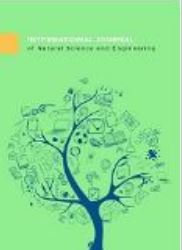The Impact of Drying and Salting on the Fish Resilience and Quality
DOI:
https://doi.org/10.23887/ijnse.v6i1.41473Keywords:
Salted Fish, Traditional Fish, DryingAbstract
Drying fish is one way of preserving fish by reducing the water content of fish so that the activity of microorganisms can be reduced. Preservation by drying is intended to extend the shelf life of fish. Many fish species have used the drying method for a long time. This study aimed to analyze the effect of drying on salted and unsalted fish to test the resistance and quality of fish. Making salted fish is the simplest preservation with low cost. The characteristics of fish that have a neutral pH, soft texture, and high nutritional content make fish a good medium for bacterial growth. Most Indonesian people manage fish to overcome the damage, including those processed into salted fish. Salted fish is one form of traditional fish processed products with drying and salting technology. Based on the study's results, it was concluded that salted fish that was dried for more than 12 hours of heating in the sun produced products that were acceptable to consumers, while drying under 8 hours produced products that consumers did not accept. There is a need for further testing on the shelf life and the need for the use of hygienic packaging. Based on the analysis, the concentration of salt and time of salting did not significantly affect the texture and aroma.
References
Aniesrani Delfiya, D. S., Sneha, R., Prashob, K., Murali, S., Alfiya, P. V, & Samuel, M. P. (2022). Hot air‐assisted continuous infrared dryer for anchovy fish drying. Journal of Food Process Engineering, 45(6), e13824. https://doi.org/10.1111/jfpe.13824. DOI: https://doi.org/10.1111/jfpe.13824
Azizah, N., Asfiyanti, N. A., Hasibuan, M., Jannah, M., Gustari, R., & Hasibuan, R. S. (2022). The Effect of Fish Thickness on Dryness Level and Time for Drying Fish. International Journal of Natural Science and Engineering, 5(3), 114–119. https://doi.org/10.23887/ijnse.v5i3.41891. DOI: https://doi.org/10.23887/ijnse.v5i3.41891
Bau, F. C., Nina, S. U., & Antuli, Z. (2021). Pengaruh Lama Pengeringan Terhadap Kualitas Kimia Dan Biologis Ikan Teri Asin Kering (Stolephorus sp.). Jambura Journal of Food Technology, 3(2), 94–101. https://doi.org/10.37905/jjft.v3i2.9101. DOI: https://doi.org/10.37905/jjft.v3i2.9101
Cavender, M. A., Steg, P. G., Smith Jr, S. C., Eagle, K., Ohman, E. M., Goto, S., Kuder, J., Im, K., Wilson, P. W. F., & Bhatt, D. L. (2015). Impact of diabetes mellitus on hospitalization for heart failure, cardiovascular events, and death: outcomes at 4 years from the Reduction of Atherothrombosis for Continued Health (REACH) Registry. Circulation, 132(10), 923–931. https://doi.org/10.1161/CIRCULATIONAHA.114.014796 DOI: https://doi.org/10.1161/CIRCULATIONAHA.114.014796
Cui, T., Chen, C., Jia, A., Li, D., Shi, Y., Zhang, M., & Liu, C. (2021). Characterization and human microfold cell assay of fish oil microcapsules: Effect of spray drying and freeze-drying using konjac glucomannan (KGM)-soybean protein isolate (SPI) as wall materials. Journal of Functional Foods, 83, 104542. https://doi.org/10.1016/j.jff.2021.104542. DOI: https://doi.org/10.1016/j.jff.2021.104542
de Melo Ramos, F., Júnior, V. S., & Prata, A. S. (2021). Impact of vacuum spray drying on encapsulation of fish oil: Oxidative stability and encapsulation efficiency. Food Research International, 143, 110283. https://doi.org/10.1016/j.foodres.2021.110283. DOI: https://doi.org/10.1016/j.foodres.2021.110283
Delima, R., Sahira, S., Sumiroyani, S., Kamelia, K., Reskiana, R., Rahmi, K. A., & Marta, E. (2022). The Impact of Using Salt on Drying Rate of Fish. International Journal of Natural Science and Engineering, 5(3), 87–95. https://doi.org/10.23887/ijnse.v5i3.41314. DOI: https://doi.org/10.23887/ijnse.v5i3.41314
Di Giorgio, L., Salgado, P. R., & Mauri, A. N. (2022). Fish oil encapsulated in soy protein particles by lyophilization. Effect of drying process. Journal of the Science of Food and Agriculture, 102(1), 206–213. https://doi.org/10.1002/jsfa.11347. DOI: https://doi.org/10.1002/jsfa.11347
Hatta, M., Syuhada, A., & Fuadi, Z. (2019). Sistim pengeringan ikan dengan metode hybrid. Jurnal Polimesin, 17(1), 9–18. https://doi.org/10.30811/jpl.v17i1.666. DOI: https://doi.org/10.30811/jpl.v17i1.666
Kambey, J. L., Farrell, A. P., & Bendell-Young, L. I. (2001). Influence of illegal gold mining on mercury levels in fish of North Sulawesi's Minahasa Peninsula,(Indonesia). Environmental Pollution, 114(3), 299–302. DOI: https://doi.org/10.1016/S0269-7491(01)00163-4
Lowerre‐Barbieri, S., DeCelles, G., Pepin, P., Catalán, I. A., Muhling, B., Erisman, B., & Paris, C. B. (2017). Reproductive resilience: a paradigm shift in understanding spawner‐recruit systems in exploited marine fish. Fish and Fisheries, 18(2), 285–312. https://doi.org/10.1111/faf.12180. DOI: https://doi.org/10.1111/faf.12180
Oktarina, A. (2016). Program Corporate Social Responsibility Perbankan Syariah Di Bidang Pengolahan Ikan Sebagai Alternatif Pemberdayaan Umkm Jangka Panjang. Al- Intaj, 2, 121–132.
Richa, R., Shahi, N. C., Lohani, U. C., Kothakota, A., Pandiselvam, R., Sagarika, N., & Kumar, A. (2022). Design and development of resistance heating apparatus‐cum‐solar drying system for enhancing fish drying rate. Journal of Food Process Engineering, 45(6), e13839. https://doi.org/10.1111/jfpe.13839. DOI: https://doi.org/10.1111/jfpe.13839
Rizal, T. A., & Muhammad, Z. (2018). Fabrication and testing of hybrid solar-biomass dryer for drying fish. Case Studies in Thermal Engineering, 12, 489–496. https://doi.org/10.1016/j.csite.2018.06.008. DOI: https://doi.org/10.1016/j.csite.2018.06.008
Sumarno, T., Agustini, T. W., & Bambang, A. N. (2020). Strategi Pengembangan Mutu Ikan Asin Jambal Roti (Ikan Manyung) di Karangsong Kabupaten Indramayu. Jurnal Pengolahan Hasil Perikanan Indonesia, 23(2), 196–205. https://doi.org/10.17844/jphpi.v23i2.32040 DOI: https://doi.org/10.17844/jphpi.v23i2.32040





